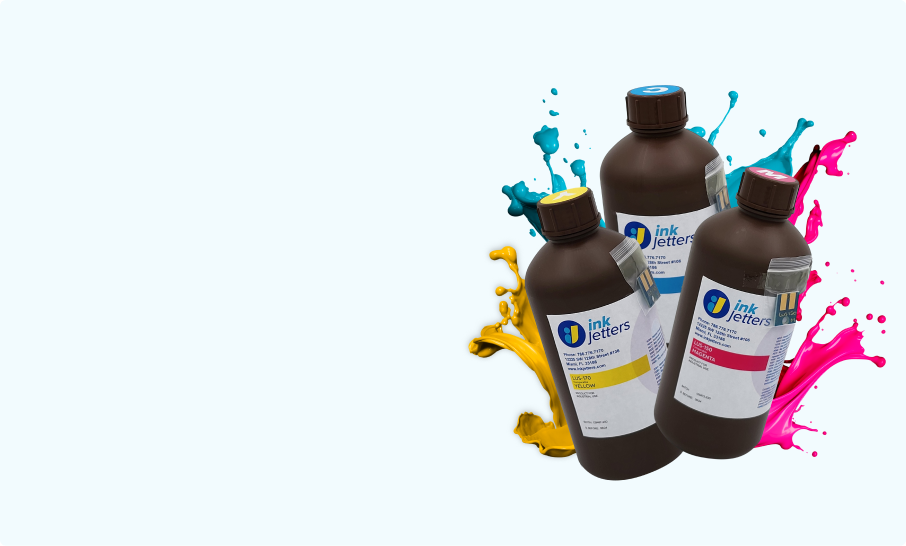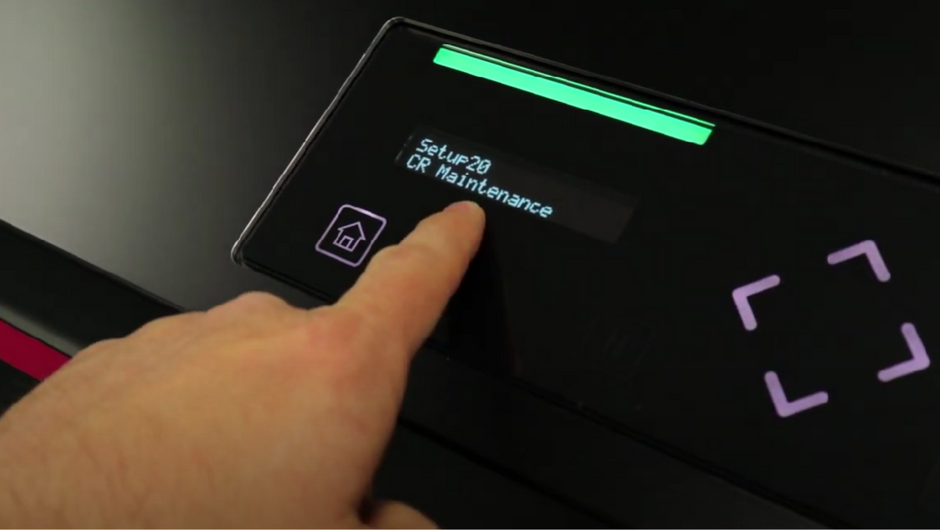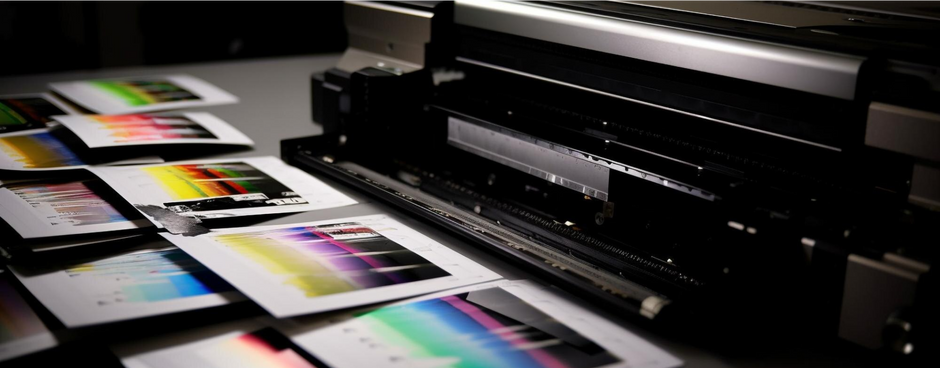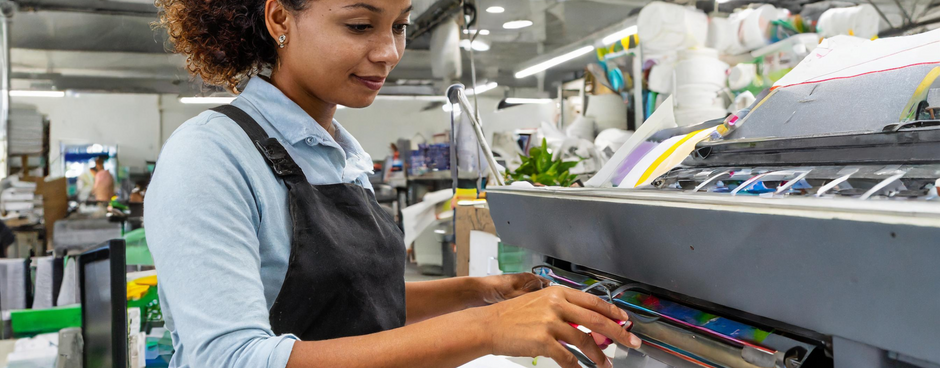In today's world, digital printing has emerged as a versatile and accessible solution for bringing ideas to life on paper, fabric, vinyl, and almost any surface. Whether you are new in the printing business or a seasoned sign professional upgrading from vinyl graphics, there are important aspects that must be considered before starting your digital printing journey. In this article, we will talk about some key factors that you need to consider when choosing your digital printing technology and what common mistakes to avoid after you've chosen your new printer. Let’s begin with understanding the basics of digital printing.
What is Digital Printing?
Digital printing is a modern printing process that involves transferring digital images directly onto a variety of media substrates like paper, canvas, fabric, synthetics, cardstock, and others using inkjet or laser technology. Unlike traditional analog printing methods like offset printing, which requires plates and lengthy setup processes, digital printing allows for on-demand printing with minimal setup time and cost.
How Digital Printing Works?
In digital printing, the process begins with a digital file that contains the artwork or image we want to be printed. This file is then sent to a digital printer, which interprets the digital data and transfers it onto the substrate. Digital printers use either inkjet or laser technology to apply ink or toner onto the substrate, creating the desired image or text. Now let’s dive into knowing the difference between inkjet and laser printing.
Inkjet Printing:
In this process, tiny droplets of ink are sprayed by the printer onto the substrate to create images. These droplets are precisely controlled by the printer's software, creating detailed and vibrant prints. Inkjet printing is compatible with a wide range of substrates, including paper, photo paper, canvas, and certain types of fabric. the pros of inkjet printing are its versatility, being able to print on a wide range of media types, for many applications, as well as its compact size and affordability compared to laser printers. They excel in their ability to produce high-quality photo prints with vibrant colors, smooth gradients, and fine details, making them ideal for photographers and graphic artists. On the other hand, the cons of inkjet printing are slower printing speeds, maintenance requirements, higher cost per page, and being prone to ink smudging.
Applications: Inkjet printers are commonly used to print photography, illustrations, graphics, signage and display graphics, apparel and textiles, labels, packaging, and promotional materials.
Laser Printing:
In this process, the printer uses a laser beam to create an electrostatic image on a photosensitive drum or belt. Toner particles are then attracted to the charged areas of the drum and transferred onto the substrate. The pros of laser printing are its speed and precision, low cost per page, and reliability, making it ideal for high-volume printing tasks. They excel at printing text-based documents, thanks to their precise toner application and sharp text reproduction. However, laser printing has some cons like a higher initial cost, limited color reproduction, and limited media compatibility.
Applications: Laser printing is widely used for printing all kinds of documents, labels, stickers, barcodes, and packaging materials as well as postcards, flyers, and other promotional materials.
Types of Inks in Digital Printing
In digital printing, the choice of ink has an important role in determining the quality, durability, and versatility of printed materials. From vibrant graphics and vivid photographs to precise text and intricate designs, the ink used can significantly impact the final output. Let’s explore the various types of inks commonly used in digital printing, their characteristics, applications, and advantages.
1. Aqueous Dye-Based Inks
Dye-based inks are made of colored dyes fully dissolved in a liquid carrier. These inks offer vibrant colors, smooth color transitions, and excellent color saturation. They are found in most desktop printers and are most commonly used by artists and photographers for printing high-quality images like photos and graphics. Dye-based inks are the best option for printing on glossy or coated paper and produce prints with a glossy or satin finish. However, they may be prone to fading over time when exposed to UV radiation (sunlight) and humidity, which makes them not the best option for archival or outdoor applications. However, a UV-resistant overlaminate film or clear coat can be added to make the prints last more.
2. Aqueous Pigment-Based Inks
Pigment-based inks contain finely ground pigment particles suspended (not dissolved) in a liquid carrier. Unlike dye-based inks, which penetrate the surface of the substrate, pigment-based inks sit on the surface and form a thin layer of color. Unlike dye-based inks, pigment-based inks are water-resistant and fade-resistant, making them suitable for applications that require durable and long-lasting prints. Pigment-based inks produce prints with a matte or satin finish and offer excellent color accuracy and archival quality. They are commonly used in professional inkjet printers for printing documents, fine art prints, and outdoor signage.
It's important to note that some inkjet printers use dye-based ink, some use pigment-based ink and some have both as options. The initial print quality between dye and pigment ink is almost the same. Both look very similar in their vibrancy and color reproduction. Dye ink is recommended for indoor use on products that will be consumed in less than a year, while pigment ink is recommended for many years of indoor use or up to two years of outdoor life.
3. Solvent and Ecosolvent-Based Inks
Solvent-based inks contain pigments or dyes dissolved in a chemical solvent carrier. The principal advantage of solvent-based ink is extended protection from UV exposure giving them durability, water resistance, and outdoor longevity of three to five years without lamination.
Solvent-based inks are commonly used in large-format inkjet printers for printing banners, billboards, and vehicle wraps. They are compatible with a wide range of substrates, including vinyl, canvas, and mesh, and produce prints with vibrant colors and high resolution.
However, solvent-based inks may emit volatile organic compounds (VOCs) during the printing process, requiring special ventilation or air purification systems to ensure workplace safety. A more environmentally friendly and safe options are the Eco-solvent inks, which offer the same results without the use of toxic solvents and VOCs. They can be used in standard home and office environments without any added ventilation.
4. UV-Curable Inks
UV-curable inks are formulated with special chemicals that react to ultraviolet (UV) light. Upon exposure to a UV lamp, the ink is instantly cured, and the ink is instantly encapsulated and sealed to the face film. This protects the print from sunlight and abrasion.
Although UV-curable printer inks are not as popular for outdoor durability as solvent and eco-solvent printer inks, they are considered to be comparable in quality but not so much in outdoor resistance. UV-cured ink can become 'uncured' in direct sunlight since part of solar energy is UV radiation.
UV-curable inks offer several advantages, including high durability, abrasion resistance, and weather resistance. They can print on various substrates, including rigid materials such as plastics, metals, and glass. UV-curable inks produce prints with vibrant colors and sharp details and are commonly used for outdoor signage, vehicle wraps, and point-of-purchase displays.
5. Latex Inks
Latex inks are water-based inks that contain latex polymer particles as the colorant. These inks are cured using heat, allowing for fast drying and improved scratch resistance.
The main advantage of Latex inks is the lack of VOCs which makes them more environmentally friendly and safe to use. Other advantages can include low odor, great outdoor durability, and compatibility with a wide range of substrates. Latex inks produce prints with vibrant colors, sharp details, and high durability, making them suitable for a variety of applications.
One drawback to latex ink is the need for much higher heat to accelerate the curing and outgassing process. Much more heat than is necessary with solvent and eco-solvent inks. These higher temperatures can cause unpleasant odors, buckling and increase installation and operating costs.
Latex inks are commonly used in wide-format inkjet printers for printing indoor and outdoor graphics, banners, and signage.
6. Direct to Garment (DTG)
Direct-to-garment (DTG) printing is a digital printing technology that uses water-based inks that adhere directly to garments, textiles, and fabrics, unlike traditional printing methods that involve transferring designs onto a separate substrate before applying them to the fabric.
These inks adhere only to a fabric that has been pre-treated with a coating that's generally applied by spray or a roller before the printing process begins. This pre-treatment solution is necessary to enhance ink absorption and improve print quality, especially on darker-colored fabrics. The garment must also be prepared by ensuring it is clean, flat, and free of wrinkles or imperfections.
DTG is known for its high-quality, full-color prints with intricate details and vibrant colors. DTG printers offer the advantage of printing full-color graphics to a fabric with the feel of a screen print without the time and labor involved in screen print preparation. This method offers a soft hand feel and the garment remains flexible and breathable, preserving the comfort and wearability of it even after printing.
Now that you know the basics of inks and their applications, you can choose the printing method that is best for your business. But there are other concepts that you need to know to get the best of your equipment and get excellent quality printings. Let´s dive into it.
Image Resolution in Digital Printing
In digital printing, image resolution refers to the level of detail and clarity present in a digital image, typically measured in pixels per inch (PPI) or dots per inch (DPI). Image resolution determines the quality and sharpness of printed output.
Pixels Per Inch (PPI) vs. Dots Per Inch (DPI):
Pixels Per Inch (PPI): It refers to the number of pixels (individual colored dots) contained within one inch of an image on a digital display or printed output. PPI describes the resolution of digital images captured by cameras or created in graphic design software.
Dots Per Inch (DPI): It refers to the number of ink dots that a printer can output per inch on a printed page. In digital printing, DPI indicates the printer's resolution capability and determines the level of sharpness and detail that can be achieved in printed output.
These concepts are key in the process of getting high-quality printed images, insufficient resolution can lead to pixelation, jagged edges, and loss of detail in printed output. On the contrary, images in high resolution produce smoother curves, crisp lines, and clearer text, enhancing overall visual appeal.
Large-format printing typically requires higher image resolutions compared to standard printing, for better results, 200 to 300 PPI or higher is recommended for most applications.
A common mistake people make is to upscale low-resolution images for large format printing, avoid this practice, as this can result in pixelation and loss of detail. Start with high-resolution images or, if possible, vector graphics to maintain image quality.
Color Space
In digital printing, color space refers to the range of colors that can be accurately reproduced by a digital printing system. It defines the spectrum of colors available for use in creating and reproducing digital images, graphics, and printed materials.
To the surprise of many, colors you see on your monitor aren't generated the same way as those that come from your printer. The three basic color spaces we deal with in the digital graphics industry are LAB, RGB, and CMYK. Each color space has its unique characteristics, applications, and advantages, making them essential tools for digital design, image processing, and printing.
LAB is a device-independent color space that represents colors based on human perception rather than specific colorants or devices. It consists of three channels: L (lightness), A (green to magenta), and B (blue to yellow), allowing for a wide range of colors to be represented.
RGB is an additive color model that represents colors by combining varying intensities of red, green, and blue light. It is the primary color space used in digital displays, such as computer monitors and mobile devices.
CMYK is a subtractive color model that represents colors by combining varying amounts of cyan, magenta, yellow, and black inks. It is primarily used in color printing processes, such as offset, digital, and inkjet printing.
Having a clear understanding of color space is essential for achieving accurate color reproduction and maintaining color consistency in digital printing, however this is a long topic to be covered in this article, find out more in this other guide: Color Space: A Comprehensive Guide for Digital Printing.
Maintenance:
Large format printers need frequent cleaning and preventative maintenance to get the best results. The maintenance frequency will depend on the type of printer and printing technology you use, but it is important to get your equipments clean to get them to work best and avoid expensive repairs.
Although maintenance will vary depending on the ink type and printer type, brand and model, here's a basic and general guide to key maintenance tasks for wide format printers:
- Regular Cleaning: Make sure to regularly clean printheads, rollers, and other critical components to remove dust, ink residue, and debris. Use lint-free cloths, non-abrasive cleaners, and manufacturer-recommended solutions to avoid damage.
- Printhead Maintenance: Perform printhead cleanings and alignments according to the manufacturer's recommendations to prevent clogging.
- Ink System Maintenance: Frequently check ink levels and replace cartridges or refill ink reservoirs as needed. Keep ink delivery systems clean and free from obstructions to prevent ink starvation or air bubbles.
- Media Handling: Ensure proper loading and alignment of media to prevent jams, misfeeds, and skewing during printing. Also, keep media paths and rollers clean to prevent dust buildup.
- Calibration and Color Management: Calibrate the printer regularly to maintain color accuracy and consistency. Use color management tools and calibration targets to ensure accurate color reproduction across different media types and print jobs.
- Firmware Updates: Stay up-to-date with firmware updates provided by the manufacturer to address performance improvements, bug fixes, and compatibility issues.
- Environment Control: Keep your printers in a controlled enviroment to ensure optimal printer operation and prevent issues.
- Scheduled Maintenance: Always follow the manufacturer's recommended maintenance schedule for periodic inspections, lubrication, and component replacements. Keep records of maintenance activities and service history.
- Training and User Education: Provide training to operators and users on printer maintenance procedures, troubleshooting, and safety precautions to minimize downtime and prevent errors.
- Professional Servicing: When necessary, engage certified technicians or authorized service providers for complex repairs, component replacements, and major maintenance tasks to ensure compliance with warranty requirements and maintain printer performance.
By implementing a preventative maintenance plan and adhering to recommended procedures, you will be able to get the best results and prolong the lifespan of your large format digital printer.







